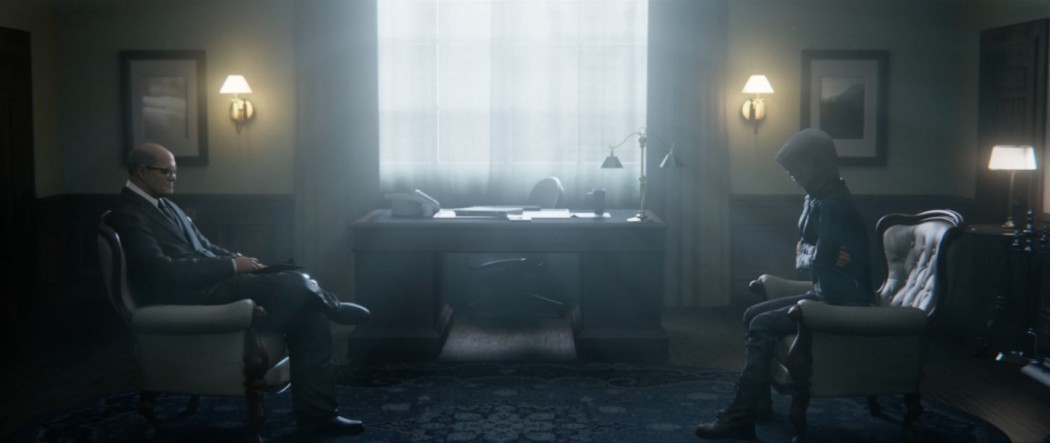Sick Heroes at PAX Aus 2015

- November 24, 2015
Alayna Cole
Alayna Cole is a producer at Sledgehammer Games and the managing director of Represent Me. She champions diversity and inclusion in the games industry, with a particular research focus on LGBTQ+ representation. Alayna co-wrote 'Cooperative Gaming: Diversity in the Games Industry and How to Cultivate Inclusion' and 'Games as Texts: A Practical Application of Textual Analysis to Games', is a co-chair of the IGDA LGBTQ+ special interest group, and holds a doctorate of creative arts.
Alayna Cole: @AlaynaMCole
Dakoda Barker: @JiroJames
Katryna Starks: @KatrynaStarks
Jane Cocks: @jatosha
Jennifer Hazel: @Rx_Pixel
Trigger Warning
The below summary includes discussion of several mental illnesses and other chronic conditions including but not limited to suicidal depression, PTSD, and amputated limbs.
Summary
Question One: Why is explicit, accurate, and positive representation of chronic conditions in media (including videogames) necessary?
When this panel was first announced, a number of Facebook comments demonstrated the necessity for more explicit, accurate, and positive representation of chronic conditions, including chronic pain, mental illness, and invisible conditions.
One of these Facebook comments was: ‘I can’t think of a game that I’ve played that’s left me thinking about conditions in a negative way, or at all.’
This is exactly the point.
The idea that somebody hasn’t encountered a game that explores chronic conditions in some way is astounding. When researching this topic, we were surprised that the number of games that include representations of mental illness and chronic conditions was even higher than we first thought (although representations are not always accurate or positive).
Explicit, accurate, and positive representation of chronic conditions in media—including videogames—is necessary because it can help to:
- Start a conversation
- Address the issue of erasure
- Illuminate ‘invisible’ conditions and the difficulties that people living with these conditions can face, helping to increase empathy and understanding
- Allow people suffering from chronic conditions to have a cathartic experience or feel a stronger connection to characters
- Offer interesting, diverse characters, narratives, and challenges
‘Perfect’ characters lead to boring narratives, and chronic conditions are one way that characters can be given more depth; however, it is important to note that giving a condition to a character should not act as a substitute for depth. Incorporating medical and mental health conditions into videogames more explicitly can help it feel like these conditions are not being ‘glazed over’ and can increase public recognition of their existence.
Question Two: How do some videogames erase conditions?
Many videogames have the opportunity to discuss chronic conditions, but choose not to. This contributes to the erasure of these conditions. Acute conditions are often explored, with characters experiencing injuries and being able to use a potion or medpack to fix this, but ongoing conditions are rarely included.
First-person shooter videogames offer a perfect opportunity to explore conditions like PTSD. While many videogames of this nature focus on gameplay and online modes over narrative, those that do include a story are made unrealistic by the way characters are able to live through the atrocities of war without experiencing any mental impact.
One example of this phenomenon can be seen in Lara Croft from the Tomb Raider series. In the Tomb Raider comics, Lara experiences PTSD and the trailer for Rise of the Tomb Raider in June 2015 suggested the Lara of the videogame series may also be experiencing this condition. This was an exciting breakthrough until it was discredited by director Brian Horton, who publicly stated that the symptoms Lara was displaying in the trailer were due to her ‘anticipation to get out of the situation and just go on her adventures.’
Question Three: How do some videogames misrepresent conditions?
While any representation is arguably better than none, a number of videogames that have tried to include chronic conditions have misrepresented them. It’s important to examine these misrepresentations so that we can learn from them and try to create more positive, accurate representations in future.
Darkest Dungeon has a mechanic where your heroes gain neuroses and conditions if you spend too much time in the dark or you get hurt by monsters. This isn’t terrible in itself, as it reflects the idea that certain conditions can be brought on by events that a character experiences; however, to cure these conditions, your character simply spends one week in an asylum, unable to participate in any of the party’s adventures. The asylum is dank, dirty, and—until you unlock additional rooms—there are prison bars on the windows.
There are two key issues with this: firstly, the idea that one week is enough time to ‘cure’ a condition; and secondly, the idea that having a physical or mental condition means you can be abandoned in horrific circumstances until you become ‘useful’ again. There is already stigma around having a chronic condition and seeking help, and representations such as this further discourage people from trying to approach a medical professional to help manage their condition.
Another example of frustrating misrepresentation is Metal Gear Solid V: The Phantom Pain. The title of this game suggested that it was going to explore issues of chronic conditions, such as the physical pain that can still be experienced by a person with a missing limb; however, the missing limbs of Snake and Kazuhira Miller seem to act only as a physical representation of their angst regarding the loss of their comrades.
Immediately before the first mission in the game, Ocelot tries to give Snake a pair of binoculars and Snake’s bionic arm has trouble grabbing the item. Ocelot tells Snake that he might take a while to get used to his new limb; however, immediately after this cutscene, Snake’s difficulties are never referenced again. Snake has no issues using his arm again and shows no concern about the pain he is supposedly feeling, phantom or otherwise.
This is unfortunate, as it feels like a step backwards from the way chronic back pain was represented in Metal Gear Solid IV, impeding the character’s progress and not allowing Snake to crouch for long periods of time. This mechanic was a promising attempt to create a more rounded character.
Life Is Strange and Always Sometimes Monsters explore mental illness, but provide problematic representations of suicidal depression. These games include characters who can be ‘saved’ from committing suicide so long as the player asks the right questions or gives the right responses. Turning suicide into a ‘puzzle’ is misrepresenting people with suicidal tendencies as well as negatively impacting anybody who may know somebody who died in this way by causing guilt and a false sense of responsibility.
By increasing the number of games that include chronic conditions, we limit the impact of these misrepresentations because they become a smaller percentage of the overall number of videogames exploring these themes. It’s important for game developers and players to learn from examples such as these, think critically about them, and challenge them, as this will lead to better representations of chronic conditions in the future.
Question Four: What are some examples of games that are heading in the right direction?
Some videogames have started a positive precedent that hopefully other game developers will use to scaffold their future titles. Some examples of games with explicit, accurate, and/or positive representation include:
- Papo and Yo (alcoholism)
- Gone Home (mental health in relation to gender and sexuality)
- Actual Sunlight (depression and suicidality)
- Nevermind (physiological feedback of mental health)
- SuperBetter (an app used to help treat depression)
- This War of Mine (the reality of depression and survival)
In addition to these titles, Depression Quest includes interesting representations of mental illness, limiting the options a player can choose to progress through the interactive narrative. The player knows what they should or want to do, but are unable to do it. This is a fundamental aspect of struggling with depression, perfectly represented by a game mechanic.
Far Cry 2 is a positive example of a heroic character struggling with a relatively realistic representation of a chronic condition—malaria—but not allowing it to interfere with their ‘macho hero’ persona.
Also, the game Dys4ia is an example of a title that was made to be cathartic for the developer. Making games can be liberating for somebody with a condition, allowing them to share their experience with the world. While Dys4ia was made for personal reasons, it has been helpful to others and acts as an example for how one person’s experience can help a wider audience to feel less alone.
There are several positive examples of representation that are helping to counteract problematic examples, but there are still many videogames we would like to see developed. More protagonists showing that a chronic condition can be limiting but still allow you to be a hero, and more normalisation of disabilities by increasing crowd diversity and incorporating chronic conditions into the character development of NPCs, are good places to start.
This panel was designed as a way of discussing an issue, sharing examples, and starting a conversation. The most rewarding part of this panel at PAX Aus 2015 was the discussion that followed, and we would love for that discussion to continue. If you have any questions or comments, please contact us and keep the conversation going.
